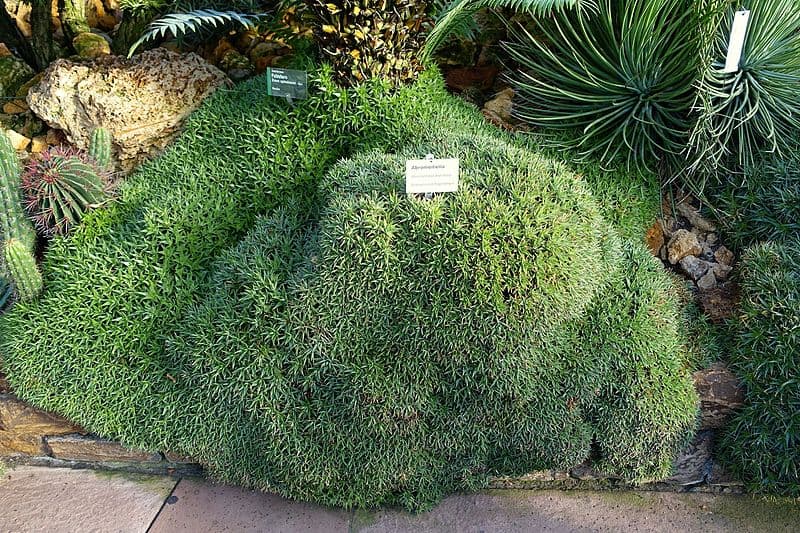The Abromeitiella brevifolia or also called Deuterocohnia brevifolia, is a beautiful, rustic, and resistant plant.
In the Bromeliaceae family, the genus Deuterocohnia consist of about 18 species of bromeliads native to Brazil, Bolivia, and Chile.
The Abromeitiella brevifolia are small succulents, which have a short stem with leaves arranged in a rosette shape.
The leaves are triangular, about 3 cm long, and are green or gray-green in color.
The flowers of this plant are small and green in color, but they are not very attractive.
This plant generally blooms in winter.
You may like: Abelmoschus sagittifolius
Abromeitiella brevifolia Care
If you are looking to grow and care for this succulent plant, just follow these steps.
Illumination
Abromeitiella brevifolia is a plant that can be both in direct sun and in partial shade.
During hot seasons, make sure you care for this plant to prevent the leaves from burning and turning brown.
Substratum
They can thrive in any well-drained soil, whether it’s rocky, poor, or dry.
What you should consider when buying the substrate for your plant is that it has excellent drainage so that the water can drain off and dry quickly.
This is very important to prevent the plant from getting sick with fungi and the roots from rotting.
Especially during winter since this type of plant is more susceptible to fungi formation during this season due to excess humidity.
Propagation
The simplest form of multiplication is by cuttins since seeds are not easy to get.
From the mother plant, select a leaf and cut it with a part of the lower stem.
Note: You can also propagate this plant through the “suckers” that the same plant produces. The only thing you have to do is separate the “sucker” from the mother plant carefully to prevent the roots from being mistreated.
Once you have the cutting, let it rest for 24 hours after cutting. After this time, what you should do is plant it in a pot with a substrate that has very good drainage.
Do not bury the cutting too much in the soil; only enter half the stem no more.
During the first weeks, keep the substrate moist, avoiding water accumulates since the cutting could die.
You will find that the propagation was successful when the cutting begins to grow and produce new leaves.
If the pot is big enough, you can leave it there; if not, you can use a new pot with enough space to grow.
Watering
The waterings will be moderate since they resist drought very well.
In spring and summer, water regularly but waiting until the substrate has completely dried.
In autumn, waterings are greatly reduced, and in winter, they are suspended.
Pests or diseases
If there is not an excess of watering or humidity, they do not present problems of pests and diseases.
That is why it is important not to overwater the plant, and it must also have a good substrate to avoid the formation of fungi.
Fertilization
During spring you can use a mineral fertilizer for succulent plants but with half of the manufacturer’s dose.
Temperature
Although this plant could withstand some weak frosts (if the environment is dry), the plant should not be exposed to a temperature below 4ºC/39°F to prevent the plant from dying.
Transplant
You will know that it is time to transplant your plant when you notice that your plant no longer has enough space to continue growing.
Another sign that it should be transplanted is when the roots of the plant come out through the drainage hole.
If you have it directly in the garden, a transplant is not necessary.
The best time to transplant your Abromeitiella brevifolia is in spring or summer, never in winter.
You can take advantage of the transplant time to add some slow-release fertilizer to strengthen the plant.
How to transplant your plant?
The first thing you should do is slightly moisten the soil so that removing the plant is much easier.
You must remove the plant from the pot very carefully, avoiding mistreating the roots.
Prepare the pot where you are going to plant your plant.
If fungi ever infect the plant, discard the substrate, otherwise you can use it again.
Plant the plant in the new pot, covering the roots of the plant well but without burying the leaves.
Don’t water your plant immediately, wait a couple of days before watering again.
Pruning
Pruning is not necessary. Only remove leaves that are wilted or that have been attacked by some pest, to prevent other plants from catching it.
Toxicity
Animals or people should not consume it.
If you have it inside the home, you should be careful with children and pets.
